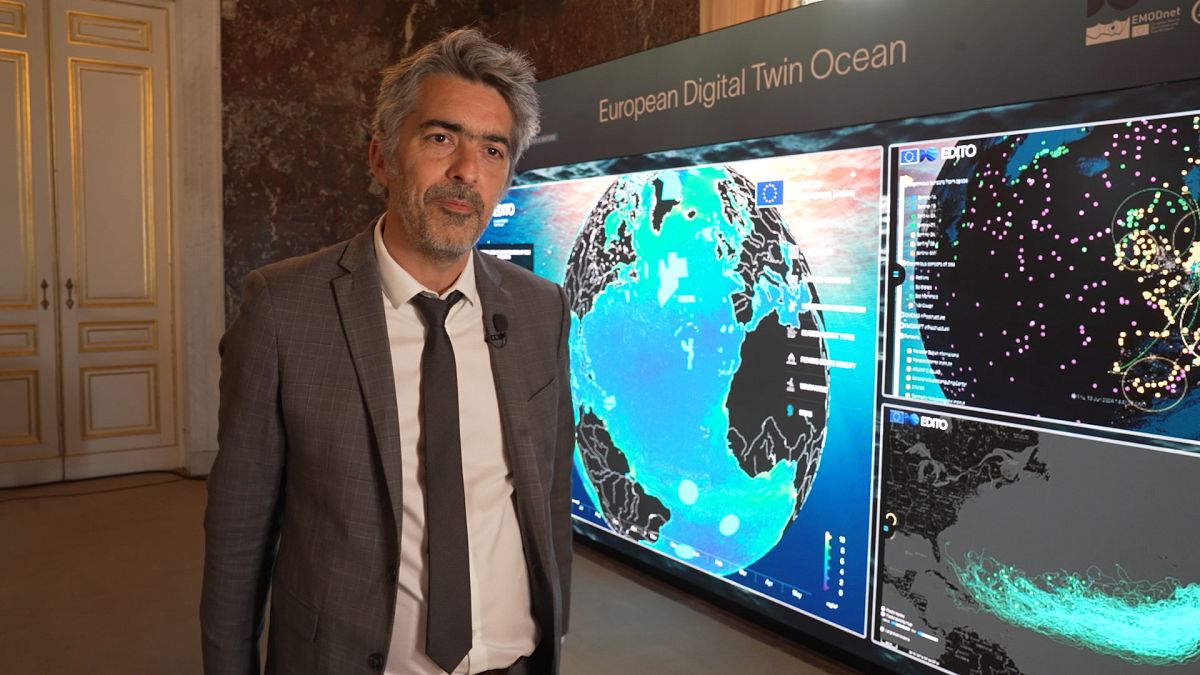Digital twin technology is set to massively expand our knowledge of the world’s oceans
The European Digital Twin of the Ocean (EU DTO) is a groundbreaking project to create a virtual model of our oceans. Powered by data from satellites, sensors, AI, and supercomputers, this digital twin shall help scientists, businesses, and policymakers better understand the ocean’s complex systems. It promises to enable them to test ideas, monitor changes, and develop sustainable ocean industries.
The EU DTO is being developed through two European-funded projects, EDITO-Infra and EDITO Model Lab, led by Mercator Ocean International — a non-profit transitioning to an intergovernmental organisation based in Toulouse, France. Euronews spoke with Pierre Bahurel, Director General of Mercator Ocean International, at the European Digital Ocean Forum in Brussels, where the EU DTO’s core infrastructure was unveiled.
“A digital twin of the ocean is a digital replica of the real ocean.
We play with it to understand what could be the impact of our actions. We put plastic, for instance, and we see where the plastic goes.
The technology is ready — we are mastering all this digital technology. We have artificial intelligence, we are modelling all the science, all the investments made during these two decades — with satellites flying, researchers developing models, operational services such as EMODnet or such as Copernicus Marine in Europe, there are good investments. With all the digital technology, this is ready to do more and be faster.
And the other one, because it’s not enough, is that the demand is there. The ocean is higher and higher on the political agenda. We have the United Nations Conference on the ocean. We have political leaders taking care of this. We have agreements that suddenly are rich on the preservation and the restoration of the ocean. We have in the European Commission its cross-cutting Mission Ocean to restore our ocean and waters. That is cross-cutting all the DGs [Directorates-General].
So the ocean is really higher and higher. The policymakers are asking us about the ocean and we are ready to respond to them. So this is what is going on — technology and demand we meet today.”

